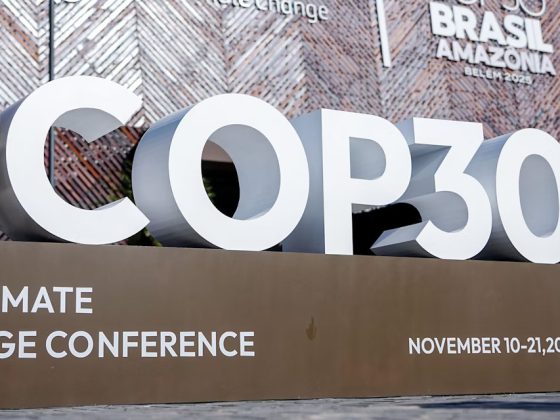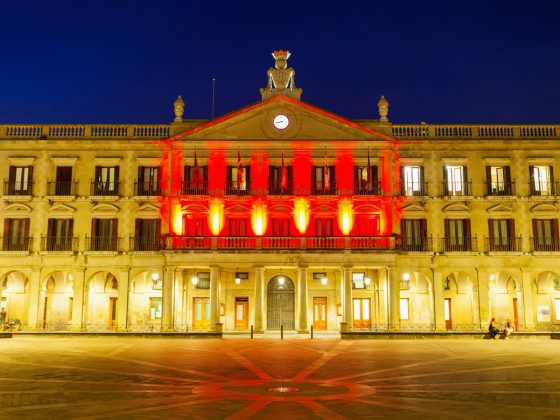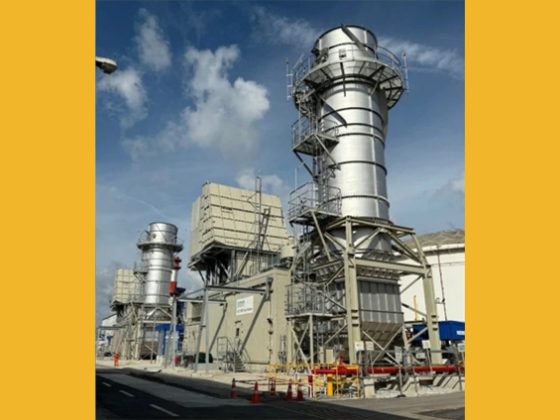COP28 President Sultan al-Jaber, centre, attends a plenary session at the COP28 UN Climate Summit, Dec. 8, 2023, in Dubai, United Arab Emirates. Al-Jaber is an oil executive whose statements on fossil-fuel phase outs have proved controversial. (AP Photo/Peter Dejong)
H. Damon Matthews, Concordia University
It was perhaps unavoidable that fossil fuels would take centre stage at this year’s COP28 climate negotiations, held in Dubai and presided over by oil magnate Sultan al-Jaber.
And indeed, it took only days for controversy to erupt in the wake of al-Jaber’s claim that there is no science behind the need to phase out fossil fuels to meet the 1.5 C target of the Paris Agreement. He later claimed he was misinterpreted.
Scientists were quick to respond. A statement signed by more than 100 climate scientists reiterated that the world needs to achieve net zero carbon dioxide (CO₂) emissions by 2050 to limit warming, and that all scenarios consistent with the 1.5 C target include an immediate and rapid decline in fossil fuel use.
The key question at play in this year’s negotiations though is whether declining fossil use needs to lead to a phase out of all fossil fuels, or merely a phase down.
And should this language refer to all fossil fuel use, or only “unabated” fossil fuels: those that continue to be used without carbon capture technology to prevent some of the resulting emissions.
Branching paths
There are as many different 1.5 C scenarios as scientists who signed the statement responding to al-Jaber’s claim. All of these 1.5 C scenarios show how we might reach net zero CO₂ emissions, but the technological pathways can differ considerably.
Some use large amounts of carbon capture and sequestration (CCS) technology to decrease the emissions resulting from continued fossil fuel use. Virtually all also include carbon dioxide removal (CDR): natural or technological strategies to remove CO₂ from the atmosphere.
All 1.5 C scenarios show that our immediate goal must be to achieve a peak and rapid decrease of global use of fossil fuel energy this decade. But without a complete phase out of fossil fuels, limiting warming to 1.5 C would require the widespread use of CCS to limit the CO₂ emissions from fossil fuels, as well as CDR to remove from the atmosphere those emissions that cannot be abated by capture technology.
Fossil fuel industry representatives are quick to claim that CCS (and its subtle variant CCUS: Carbon Capture Utilization and Storage), is how the fossil fuel industry will bring the world to align with the 1.5 C target.
But after decades of research and billions of dollars of government financing, CCS remains an expensive and inefficient CO₂ abatement technology that has not lived up to expectations.
So while CCS may have a role to play, for now that role seems fairly limited.
Not practically viable
A recent study shows that an over-reliance on CCS in 1.5 C pathways leads to far higher economic costs, compared with pathways that limit its use to capturing only the most difficult-to-abate CO₂ emissions, such as those from cement manufacture.
Carbon dioxide removal is even more difficult and expensive. Where CCS captures CO₂ from the high-concentration output of power plants, CDR must capture CO₂ from the much lower ambient levels of CO₂ in the atmosphere itself.
Both processes require the captured CO₂ to be sequestered in permanent reservoirs to contribute to a durable net-zero CO₂ world.
Virtually all current carbon dioxide removal is being achieved by forest-based methods such as afforestation and reforestation. However, these forest-based removals amount to less than a third of the amount of CO₂ emitted globally by deforestation and other land-use changes.
Natural forest regeneration and other nature-based carbon removal methods have an important role to play in reversing the climate and biodiversity consequences of global deforestation. But their limited capacity and risk of impermanence in the face of increasing climate disturbances means that natural carbon storage is not able to offset ongoing fossil fuel emissions.
Technological carbon removal methods could achieve larger removal levels, but these come with high economic and/or environmental costs. Biomass energy with CCS, or BECCS (which uses harvested biomass to produce energy, combined with technological capture and sequestration of the emissions), would have severe repercussions for ecological systems and could also negatively impact global food production.
Direct air capture with carbon sequestration (DACCS) could avoid some of these land-use consequences, but comes with an even higher price tag.
Choices
The scientific literature is clear that CCS and CDR methods are difficult, expensive and unable to deliver rapid near-term emissions reductions. And yet, virtually all 1.5 C emissions scenarios include both CCS and CDR methods in their transition to net zero CO₂ emissions.
So the question of whether the science supports the need for an “orderly and just phase out of fossil fuels” depends on what we believe CCS and/or CDR will be able to deliver between now and 2050.
Will the costs of technological CCS and CDR methods come down fast enough to allow these technologies to expand to the scale that would be needed to counter ongoing fossil fuel use? And if so, will we be able to employ these technologies without causing significant harm to ecological systems, food security and Indigenous and local communities?
And what is the incentive to do so when renewable energy is so much easier and cheaper? The track record so far suggests that neither CCS nor CDR is likely to help us overcome these challenges anytime soon.
This year’s COP28 has become a battle between fossil fuel industry lobbyists trying to carve out room for fossil fuels a in a 1.5 C pathway, and a growing civil society movement calling for a fossil fuel non-proliferation treaty.
Scientific evidence can inform this discussion, but can only take us so far. The world needs to make a choice that is based on the science, and to have this choice reflected in the negotiated outcome of COP28.
As a climate scientist working in this space, I would choose a future that increases equity, restores natural systems, and replaces fossil fuels with non-carbon renewable energy, grounded on a robust fossil fuel non-proliferation treaty.
I would choose to pursue a rapid and just fossil fuel phase out.![]()
H. Damon Matthews, Professor and Climate Scientist, Department of Geography, Planning and Environment, Concordia University
This article is republished from The Conversation under a Creative Commons license. Read the original article (https://theconversation.com/cop28-the-scientific-basis-for-a-rapid-fossil-fuel-phase-out-219382).










